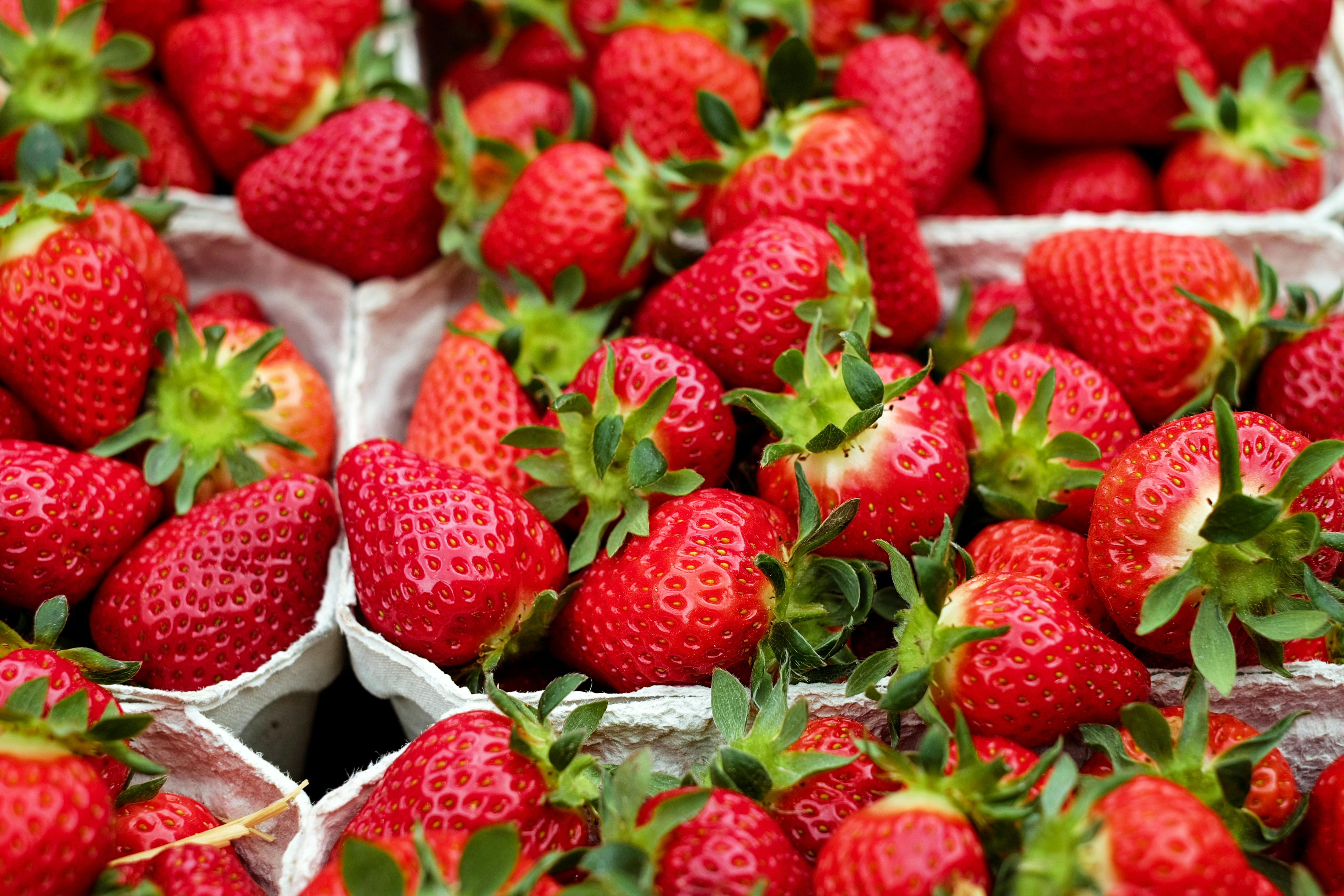If you’ve noticed that your strawberries are dying, you may be wondering what could be causing the problem. Strawberries are relatively easy to grow, but they can be affected by many factors. In this guide, we will discuss some of the common reasons why your strawberries may be dying and how you can help to revive them. By addressing any potential issues with your strawberry plants, you can get them back on track and producing a plentiful harvest for years to come.There are a variety of factors that can lead to the death of strawberry plants. These include diseases, pests, nutrient deficiencies, improper watering, and extreme weather conditions. Diseases such as gray mold and verticillium wilt can be particularly devastating to strawberry plants. Pests like aphids, mites, slugs, and nematodes can also cause serious damage. Nutrient deficiencies resulting from poor soil quality or inadequate fertilization can also contribute to the death of strawberry plants. Improper watering practices such as overwatering or underwatering can lead to plant stress and eventual death. Finally, extreme weather conditions such as excessive heat or cold can also cause the death of strawberry plants.
Identifying the Cause of Dying Strawberries
Dying strawberries can be caused by a number of factors, from environmental stress to disease. In order to identify the cause, it is important to first observe the symptoms of the strawberries. Are the leaves yellowing? Are there any holes or discoloration on the fruit itself? Are there any visible signs of insects or disease? All of these can be signs that something is wrong with your strawberries.
The next step in identifying the cause is to check the soil and environment around your strawberry plants. Do you have sufficient drainage in your garden beds? Is the soil too wet or dry? Is there adequate sunlight or too much shade? If any of these conditions are out of balance, it could be causing stress for your strawberry plants and leading to poor fruit production.
Finally, it’s important to check for signs of pests and diseases. Insects like aphids and mites can feed on the leaves and flowers of strawberry plants, while fungal diseases like powdery mildew can affect both foliage and fruit production. If you notice any signs of pests or disease, take appropriate action such as removing affected plants or using a fungicide for treatment.
By taking all these steps into consideration, you should be able to identify what is causing your dying strawberries and take steps to correct it quickly. With a little care and attention, you can ensure healthy strawberry production all season long!
Common Problems that Lead to Dying Strawberries
One of the most common problems that lead to dying strawberries is inadequate watering. When strawberries are not given enough water, they are likely to wilt and die. Additionally, too much water can be just as detrimental to the health of strawberries, as it can cause disease and mold growth. It is important to keep soil moist, but not soggy, in order for the strawberries to thrive.
Another problem that leads to dying strawberries is insufficient sunlight. Strawberries need at least 6 hours of direct sunlight each day in order to grow and produce fruit. If they are not getting enough sunlight, the leaves will start yellowing and dropping off, eventually leading to the death of the plant.
Strawberry plants can also suffer from inadequate nutrition. The soil needs to be nutrient-rich in order for the plants to grow strong and healthy. Adding compost or fertilizer regularly can help keep the soil nutrient-rich and promote growth. Without adequate nutrition, strawberry plants will struggle and eventually die off.
Finally, pests can be a major problem when it comes to dying strawberries. Various insects such as aphids and mites feed on strawberry plants and can cause significant damage if left unchecked. It is important to monitor for pests regularly and take steps to prevent them from infesting your strawberry plants if you want them to stay healthy and productive.
Can Poor Soil Cause My Strawberry Plant to Die?
Poor soil can be a major contributing factor to the death of strawberry plants. There are several aspects of soil quality that must be taken into account when choosing a location for your strawberry plant. Nutrient content, pH levels, and water drainage are all important factors that influence how well your plant will grow. If any of these elements are lacking, it can cause the plant to become stressed and eventually die.
Nutrients in the soil provide essential elements for healthy growth. Without sufficient nutrients, plants will struggle to survive and can eventually die. If you have poor quality soil, it is important to take steps to improve it before planting your strawberries. You can do this by adding organic matter such as compost or manure, which will add nutrients and improve water retention in the soil.
The pH level of the soil also affects how well strawberries can grow. Strawberries prefer a slightly acidic environment with a pH between 5 and 6.5. If your soil has a higher or lower pH level than this range, you may need to amend it with sulfur or lime in order to balance the pH level before planting your strawberries.
Finally, it is important that water drains properly from the soil so that your plant’s roots do not become waterlogged and rot away. Poor drainage can lead to root rot which will eventually kill the plant if not corrected quickly enough. To test for proper drainage, dig a hole in your garden and fill it with water; if the water remains after 24 hours then you may need to take steps to improve drainage in that area before planting your strawberry plants there.
In conclusion, poor quality soil can be one of many contributing factors leading to death of strawberry plants if not addressed appropriately beforehand. Be sure to test for nutrient content, pH levels, and water drainage before planting your strawberries in order to ensure their health and longevity!
How Does Watering Too Much or Too Little Affect my Strawberry Plant?
Water plays an important role in the health and growth of strawberries. Too much or too little water can affect the health, growth, and yield of the strawberry plant. When it comes to watering strawberry plants, there is a delicate balance that must be struck.
If you overwater your strawberry plants, it can lead to root rot, fungus, and other diseases. The soil should be kept moist but not soggy. If the soil is too wet for too long, the roots will start to suffocate and die off which will cause the plant to wilt and eventually die.
On the other hand, if you underwater your strawberry plants they will suffer from drought stress which can stunt growth and reduce yields. If you don’t water your strawberry plants enough they will become dry and brittle which will make them more susceptible to disease and pests.
In order to keep your strawberry plants healthy and productive it is important to give them enough water without overdoing it. The best way to do this is to check the soil moisture before watering. If the top inch of soil feels dry then it’s time to water your plant. In general, you should aim for about 1-2 inches of water per week for optimal growth and yield.

Disease or Pests Killing Strawberry Plant?
Strawberries are a beloved fruit for many people, but not all gardens are lucky enough to grow these tasty treats. If your strawberry plant is dying, it could be due to disease or pests. Understanding what’s causing the problem can help you take the necessary steps to save your precious plants.
Diseases can be caused by fungi, bacteria, viruses, and other microorganisms that infect a plant. Common illnesses include powdery mildew, stem rot, and leaf spot. To diagnose the cause of your plant’s illness, look for signs like discoloration of leaves or stems, wilting leaves or stunted growth. Once you’ve identified the disease, you can take steps to treat it.
Pests can also attack your strawberry plants and cause major damage. Aphids and spider mites are common culprits when it comes to eating away at leaves and stems; slugs and snails love munching on juicy berries; and birds may swoop in during harvest time to get their fill. To combat pests, you can use natural remedies like diatomaceous earth or neem oil, as well as traps and barriers to keep them away from your plants.
If you think disease or pests may be killing your strawberry plant, don’t despair! There are steps you can take to diagnose the problem and find a solution that will help save your beloved berry patch.
Treating Disease or Pests that are Killing Your Strawberries
Diseases and pests can be devastating to your strawberry patch. Knowing how to treat them is key to keeping your strawberries healthy and thriving. The first step is to identify the problem. Common diseases that affect strawberries include leaf spot, verticillium wilt, and powdery mildew. Common pests that can affect strawberries include aphids, thrips, mites, slugs, and snails.
Once you have identified the problem, it’s time to take action. Treating diseases is often done with fungicides or other chemical treatments. It’s important to follow the instructions on the product label carefully when using these treatments. For pests, you may need to use a pesticide or some other type of control method such as hand-picking or trapping.
It’s also important to practice good garden hygiene in order to prevent diseases and pests from taking hold in your strawberry patch in the first place. This includes removing any diseased or damaged plants as soon as possible and cleaning up any fallen fruit or debris that could harbor disease or pests. Mulching around your plants is also helpful in preventing disease and pest outbreaks.
By taking these steps, you can keep your strawberry patch healthy and free of disease and pest problems!
Precautionary Steps to Prevent Strawberries from Dying
Strawberries are a delicious and nutritious addition to many meals or snacks. Unfortunately, if not properly cared for, strawberries can perish quickly. To ensure that your strawberries last as long as possible, there are several precautionary steps you can take.
First, be sure to store your strawberries in the refrigerator. The ideal temperature range is 34-38 degrees Fahrenheit. Additionally, you should keep them in a shallow container with a lid and avoid keeping them in a closed plastic bag or open container. This will help keep the moisture level low and prevent the berries from decaying too quickly.
Second, always inspect the berries before purchasing or consuming them to make sure that they don’t have any mold or rot on them. If there is any sign of mold or rot, discard the entire container of berries immediately. Additionally, never wash your strawberries until you are ready to eat them because this will cause them to spoil faster.
Third, avoid overcrowding the container when storing your berries as this can lead to condensation buildup and cause premature rotting of the fruit. If possible, spread out the fruits on a single layer in the container with some spaces between each berry so that air can circulate around them freely and prevent moisture build-up
Finally, be sure to consume your strawberries within three days of purchasing if they aren’t already overripe or beginning to show signs of molding or rotting. This will ensure that you get as much enjoyment out of your strawberries as possible before they go bad!

Conclusion
Strawberries can be a great addition to any garden, but it’s important to make sure that they are given the right care and environment to thrive. If your strawberries are dying, it could be because of disease, pests, insufficient watering, nutrient deficiencies, or the wrong soil pH. To ensure that your strawberries stay healthy and produce quality fruit, make sure they’re planted in well-draining soil in an area that gets plenty of sunlight. Ensure you water them regularly and fertilize them with a balanced fertilizer to prevent nutrient deficiencies. Additionally, take steps to control pests and diseases as soon as possible to keep your strawberry plants healthy and productive.
With the right care and attention, you can have a thriving strawberry patch for many years. Taking the time to understand what could be causing your strawberry plants to struggle will ultimately help you save time and money by avoiding costly mistakes. By applying these methods outlined above, you can significantly increase the health of your strawberries and have a bountiful harvest for years to come!



